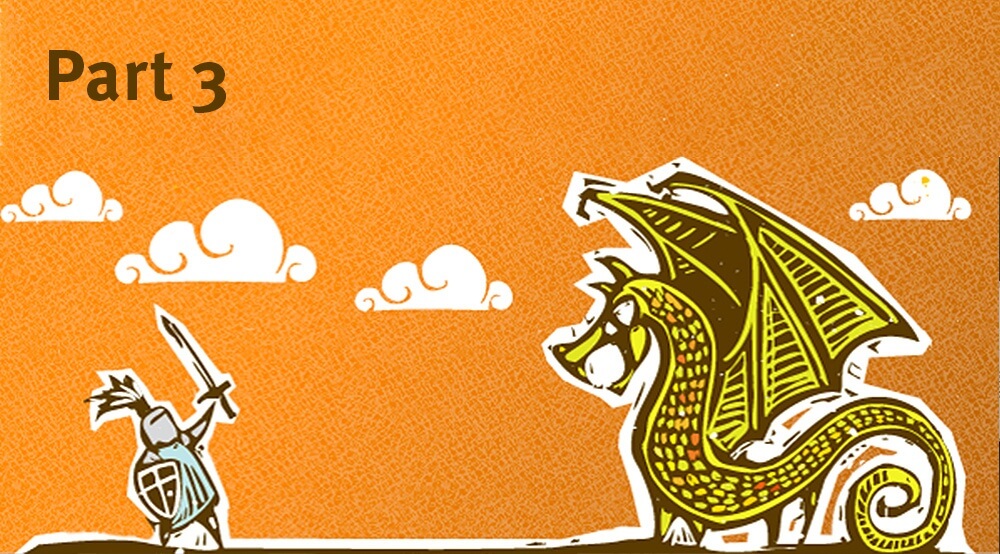For Challenger Brands, the way they behave internally can be as important to their success as the steps they take with their external-facing efforts.
In the classic David and Goliath story, our hero’s prowess with a slingshot was crucial to his success. But more important was a realistic appraisal of the situation he faced, fearless confidence, and unwavering decisiveness.
Challenger Brands need all those things… before they need to be good with a slingshot.
Yield has built a strong portfolio of Challenger Brand success stories, helping clients apply the key practices we have determined to contribute most significantly to success. Our first installment in this series focused on the fundamentals of your approach: Establish a distinctive point of difference. Find the white space. Take educated risks. Last time, we discussed three insights crucial to beginning the Challenger Brand journey: Narrow your target. Find channels you can own. Be disruptive.
This week, two critical internal factors that are fundamental to the cumulative, ongoing success of the Challenger Brand: Ensure internal alignment from the beginning. Invest for the long term.

7. Ensure internal alignment from the beginning.
It’s an inverse relationship. The less you have to spend, the more people have an opinion on how to spend it best. When budgets are large, there are opportunities to try different approaches and see what generates the best success. When budgets are small, there is no room for disjointed or conflicting messages and sparsely distributed media.
Departments within organizations are inherently mired in their own perspectives. The Marketing Department wants to build the brand. The Sales Force wants ads that close deals for them. Finance wants to cut the marketing budget until profits improve. Everyone has a different opinion on what the brand stands for, who the target is, and how to reach them. Any single course of action is bound to have more dissenters than supporters.
The first step in avoiding these pitfalls is generating internal alignment. Involving internal stakeholders early allows their perspectives to be heard and incorporated. It also allows them to hear the other perspectives in detail, and to understand where their specific interests fit into the larger brand picture. A “grand unveiling” of a bold new marketing campaign may seem like good showmanship, but in the corporate environment it can leave many wondering how the hell we got here!
Yield uses GENESIS™, our strategic planning process, to draw internal stakeholders into the early stages of a major branding exercise, incorporating their perspectives, securing their participation, and educating them on the larger issues. In the B2B space, professional services clients are renowned for their strong opinions. Law firms, financial services companies, government ministries and family businesses have all benefited by a collaborative process, supported by research, committed to a singular focus. Everyone is heard, and everyone contributes to the resulting plan.
When alignment is achieved, there is stronger support for marketing spending, a more consistent message outside of marketing efforts, and a greater commitment to the long-term plan.
And a long-term plan is essential.

8. Invest for the long term.
It’s good advice for any brand, but a critical perspective for the Challenger Brand. Accept that everything you are going to do is part of a longer-term plan to build a unique brand with a unique offering and a consistent message. You cannot outspend your competitor for share-of-voice. But you can say something this year – and say it again next year, and the year after that – that will gradually develop a strong, single-minded share of mind.
In doing so, you will also build a brand that is more iconic, with greater customer loyalty and favourability. The “slow burn” finds its way into the collective psyche.
- Since 1980, Absolut Vodka has stayed true to a simple, consistent idea – a bottle-shaped object in the middle of an ad, and a headline that reads Absolut something. Can you recall a Smirnoff ad?
- The “Most Interesting Man in the World” campaign for Dos Equis was launched in 2006 and has seen US sales increase every year – a total increase of 22% as imported beer sales overall have dropped 40%. This concept is simple and consistent and now takes very little TV media to continue to drive a strong online and Facebook presence.
- Toyota, now the world’s #1 automaker, entered the North American market in the 70s as a Challenger Brand. Famously, and like many Japanese companies of the time, they came into the Western market with a 40-year plan! And, well, that appears to have been smart.
Next time, the two final fundamentals, focused on managing the progress of a Challenger Brand as success builds: Measure early and measure often. Know when to stay the course and when to modify.






